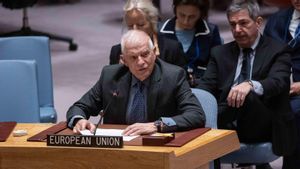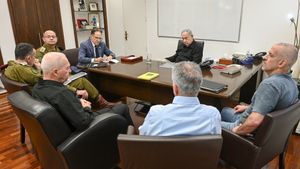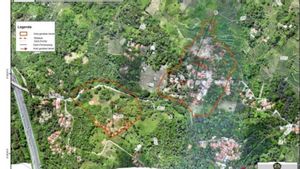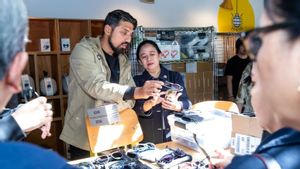JAKARTA - The Seoul Metropolitan Government announced that in the middle of this month, a demonstration test flight for urban air mobility services (UAM) will begin next year, focusing on Yeouido and Sungai Han areas, with plans to commercialize this service by 2030.
"We opened the sky for Seoul to create a safe and environmentally friendly transportation alternative," said Seoul Mayor Oh Se-hoon, quoted from The Korea Times November 28.
"This new mobility mode will offer unprecedented freedom of movement for residents," he added.
During the UAM, Drone and AI Technology Cooperation Conference held at Seoul City Hall, Mayor Oh unveiled plans for Seoul's urban air mobility initiative (S-UAM), outlining the vision of turning the city into a "three-dimensional transportation center."
The plan aims to create an integrated air transportation system. The city government highlights some of the main powers of the S-UAM initiative, including rich city tourism resources, medical infrastructure, experience with helicopter operations, and a strong public transportation network.
In line with its objectives, the city government plans to build a vertical in stages, the main facility for UAM operations.
It is known, vertiport is a facility where passengers can ride and move from one mode of transportation to another mode of transportation, including UAM vehicles, buses, driverless shuttles, subways, and private transportation options.
The first phase of the UAM project will be launched in the first half of next year, featuring two early demonstration routes one connecting Goyang, Gimpo International Airport, and Yeouido Park, and another connecting Jamsil to Suseo Station.
During this stage, safety assessments will focus on the reliability of aircraft frames and flight control systems.
Following this test, the main facilities will be built in four locations at Yeouido, Suseo, Jamsil, and Gimpo International Airports to support pilot operations and early-stage services.
Vertiport at Gimpo International Airport is expected not only to serve business and commuter traffic, but also tourism and medical routes, which expand the choice of mobility for Seoul residents and visitors.
The city government hopes that the S-UAM system, once fully operational, will significantly increase intercity connectivity and reduce spatial limitations.
SEE ALSO:
The 25-kilometer route from Pangyo in Seongnam, Gyeonggi Province, to Gwanghwamun Station in downtown Seoul, which can currently be reached within an hour by car or public transportation, will only take 15 minutes with UAM.
The reduction in travel time across Seoul's metropolitan areas, including Incheon and Gyeonggi provinces, is projected to result in an annual economic impact of around 2.2 trillion won.
"City and military will collaborate to create a safe and efficient transportation system, by combining the expertise and technology of the two organizations to help Seoul become a world-famous transportation hub," said Mayor Oh.
The English, Chinese, Japanese, Arabic, and French versions are automatically generated by the AI. So there may still be inaccuracies in translating, please always see Indonesian as our main language. (system supported by DigitalSiber.id)


















